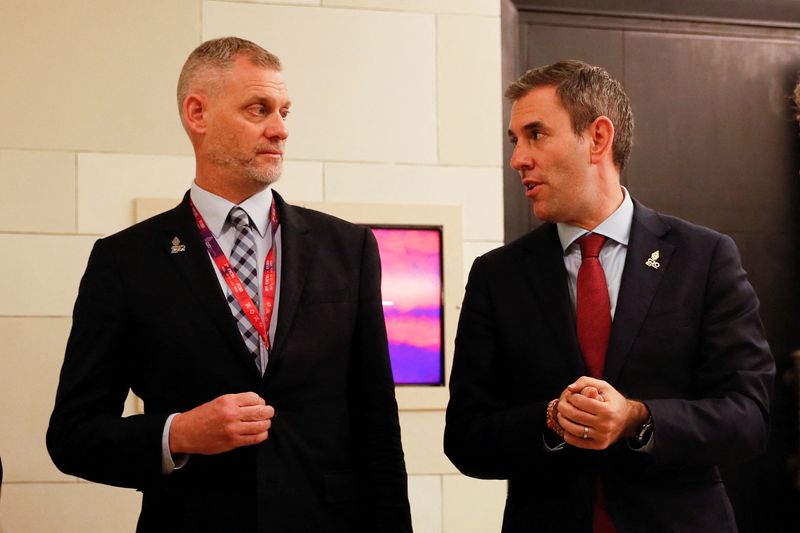By Wayne Cole
SYDNEY (Reuters) - Australia's Labor government on Tuesday boasted the first budget surplus in 15 years as strong jobs growth and bumper mining profits swelled its coffers, but it will quickly be swallowed up by spending on everything from health to energy and defence.
In his second budget since winning power in May last year, Treasurer Jim Chalmers also announced billions in cost-of-living relief aimed at lowering power bills and consumer prices in a helping hand to the Reserve Bank of Australia's (RBA) fight against inflation.
"Providing responsible, targeted relief is the number one priority in our Budget," Chalmers told lawmakers, while also lauding the improvement in the budget bottom line.
"This Budget, we've returned 82% of the extra revenue windfall that’s largely come from lower unemployment, stronger jobs and wages growth, and higher prices for key exports."
The highlight was a projected A$4.2 billion surplus for the year to June 2023, the first since 2007/08 and a huge turnaround from the A$37 billion shortfall forecast last October.
The former Liberal National government came tantalisingly close to a surplus in 2019, only for COVID-19 to blow a pandemic-sized hole in the accounts and lift the deficit to a record A$134 billion.
The latest improvement owes much to a surprisingly strong labour market, which has taken unemployment to near 50-year lows of 3.5% and boosted income tax while curbing welfare payments.
High prices for Australia's commodity exports have also delivered a windfall to mining profits, and thus tax receipts, though prices are now well off their peaks.
Chalmers also expects the domestic economy to brake to just 1.25% in 2023/24 from 3.25% this fiscal year, in large part due to a painful 375-basis-points of rate rises from the RBA.
That tightening should have the desired impact on inflation, which Chalmers sees slowing to 3.25% by mid-2024, down from the current blistering 7.0% pace. Treasury estimates its relief package for energy bills alone will cut 0.75 percentage points from consumer price inflation in 2023/24.
Higher interest rates, however, have sharply raised the cost of funding the government's near-A$1 trillion in debt, with debt repayments the fastest growing cost in the accounts.
Labor has also promised to honour a commitment by the previous government to slash income taxes from 2024/25, cuts that are projected to cost a budget-busting A$254 billion over the first 10 years.
The cuts are not especially popular with the public given the vast majority go to the higher paid, but Labor is loath to break an election promise and seems boxed-in.
There are plenty of other demands on the public purse. Annual spending on hospitals and aged care is seen rising by 6% or more every year for the next decade, while interest payments are up almost 9% and disability payments 10%.
Defence is set for the biggest increase since World War Two amid plans to spend A$368 billion out to the 2050's on nuclear powered submarines from the UK and United States.

All of which means the budget will soon be back in the red, with Chalmers forecasting deficits of A$14 billion in 2023/24 and A$35 billion the year after. As surpluses go, this is very much a one-off.
(This story has been corrected to say that first surplus since 2007/08, not 2008/09, and previous estimate was made last October in paragraph 5)